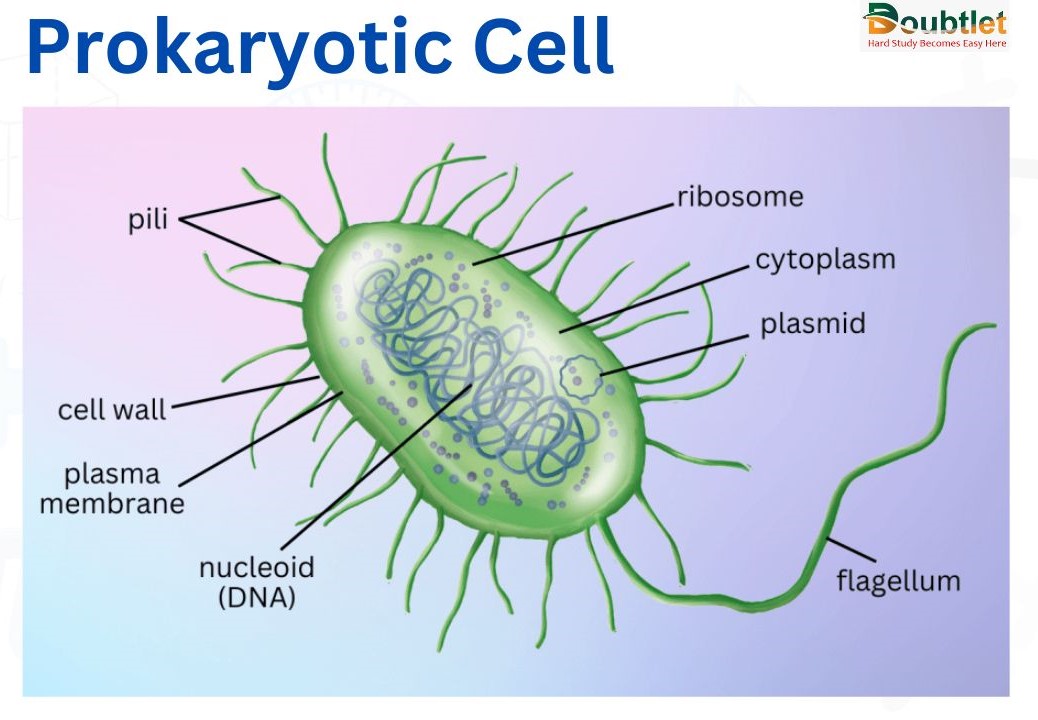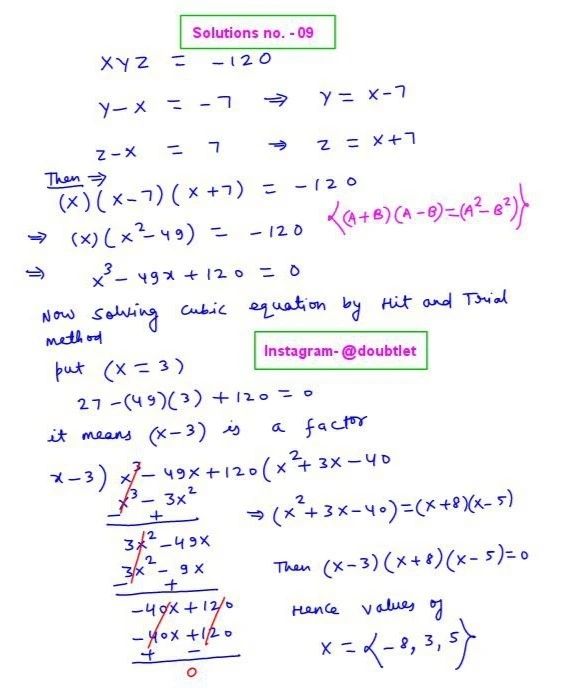









Cells are the basic building blocks of all living organisms. Understanding cells and their various components is crucial for studying life at the most fundamental level. This comprehensive guide delves into the types of cells, their structures, and functions, providing detailed explanations and informative diagrams to enhance your learning experience.

Sweta | July 17, 2024
Share this Page on:
![]()
![]()
![]()
![]()
![]()
1. Introduction to Cell:
Cells are the smallest units of life, forming the foundation of all living organisms. They perform essential functions that sustain life, from providing structure to facilitating growth and reproduction. Cells come in various types and have complex structures that enable them to perform specific tasks efficiently. All organisms are composed of cells. Some are composed of a single cell, called unicellular organisms, while others are composed of many called multicellular organisms.
2. History of Cell discovery:
Cell discovery dates back to 1665 when Robert Hooke, an English scientist, first observed cells in a slice of cork using a primitive microscope. He coined the term "cell" because the structures he saw reminded him of the small rooms, or "cellula," in a monastery. Later, in the 1670s, Antonie van Leeuwenhoek, using improved microscopes, observed living cells and microorganisms. The development of cell theory in the 19th century by scientists Matthias Schleiden, Theodor Schwann, and Rudolf Virchow established that all living organisms are composed of cells and that cells are the basic units of life.
3. What is a Cell:
A cell is all living organisms' basic structural, functional, and biological unit. Cells can exist as independent units of life, like in unicellular organisms or as part of multicellular organisms, where they work together to form tissues and organs. Cells are responsible for carrying out all the essential functions that sustain life, including metabolism, energy production, and reproduction. You can see different cell shapes in the diagram below.

4. Types of Cell:
Cells are broadly categorized into two types: prokaryotic and eukaryotic cells. Each type has unique characteristics and structures that differentiate them from one another:
(a) Prokaryotic Cells:
Prokaryotic cells are simple, single-celled organisms without a nucleus. Bacteria and archaea are prime examples of prokaryotes. These cells have a simple structure, with genetic material freely floating in the cytoplasm. They lack membrane-bound organelles but perform all essential life processes.

Characteristics of Prokaryotic Cells:
- No nucleus; DNA is located in the nucleoid region.
- Smaller in size (0.1-5.0 µm).
- Lack of membrane-bound organelles.
- Reproduce asexually through binary fission.
- Cell wall present (made of peptidoglycan in bacteria).
(b) Eukaryotic Cells:
Eukaryotic cells are more complex and can be single-celled or part of multicellular organisms. They have a defined nucleus that houses genetic material. Plants, animals, fungi, and protists are all composed of eukaryotic cells. These cells contain membrane-bound organelles that perform specific functions.

Characteristics of Eukaryotic Cells:
- Have a nucleus enclosed by a nuclear membrane.
- Larger in size (10-100 µm).
- Contain membrane-bound organelles (e.g., mitochondria, ER, Golgi apparatus).
- Can reproduce sexually or asexually.
- A cell wall is present (made of cellulose) in plant cells.
5. Structure and Functions of a Cell:
Cells have various structures called organelles, each performing distinct functions necessary for the cell's survival and proper functioning. Understanding the role of each organelle is key to comprehending how cells operate.
Cell Membrane
The cell membrane, or the plasma membrane, is a protective barrier surrounding the cell. It regulates the movement of substances in and out of the cell, maintaining homeostasis. The membrane is composed of a lipid bilayer with embedded proteins.
Functions:
- Protects the cell from its surroundings.
- Provides a site for biochemical reactions.
- Controls the passage of materials into and out of the cell.
- Facilitates communication with other cells.
Nucleus
The nucleus is the cell's control center, housing the cell's genetic material (DNA). It regulates gene expression and cell division. The nucleus is surrounded by a nuclear envelope with nuclear pores that allow the exchange of materials between the nucleus and cytoplasm.
Functions:
- Stores genetic information.
- Coordinates cell activities like growth, metabolism, and reproduction.
- Synthesizes RNA and ribosomal subunits.
Cytoplasm
The cytoplasm is a jelly-like substance that fills the cell, providing a medium for chemical reactions. It contains various organelles that perform specific functions. The cytoskeleton within the cytoplasm helps maintain cell shape and aids in movement.
Functions:
- Supports and suspends organelles.
- Facilitates intracellular transport.
- Site of many metabolic reactions.
Mitochondria
Mitochondria are known as the powerhouses of the cell. They generate energy through cellular respiration, providing the cell with the energy required to perform its functions. Mitochondria have their own DNA and are thought to have originated from free-living bacteria through endosymbiosis.
Functions:
- Generate ATP through oxidative phosphorylation.
- Regulate the metabolic activity of the cell.
- Play a role in apoptosis (programmed cell death).
Endoplasmic Reticulum (ER)
The endoplasmic reticulum is a network of membranes involved in protein and lipid synthesis. It is divided into rough ER (with ribosomes) and smooth ER (without ribosomes). The rough ER is involved in protein synthesis and modification, while the smooth ER is involved in lipid synthesis and detoxification.
Functions:
- Rough ER: Synthesizes and modifies proteins.
- Smooth ER: Synthesizes lipids, metabolizes carbohydrates, and detoxifies drugs and poisons.
Golgi Apparatus
The Golgi apparatus modifies, sorts, and packages proteins and lipids for transport or secretion outside the cell. It consists of flattened membranous sacs called cisternae and plays a crucial role in the post-translational modification of proteins.
Functions:
- Modifies proteins and lipids produced by the ER.
- Sorts and packages materials into vesicles for transport.
- Produces lysosomes and other specialized vesicles.
Ribosomes
Ribosomes are the sites of protein synthesis. They can be found floating in the cytoplasm or attached to the rough ER. Ribosomes read the mRNA sequence and translate it into a polypeptide chain, which folds into a functional protein.
Functions:
- Translate mRNA into proteins.
- Facilitate the assembly of amino acids into polypeptide chains.
Lysosomes
Lysosomes contain enzymes that break down waste materials and cellular debris. They play a crucial role in the cell's waste disposal system by digesting unwanted materials and recycling cellular components.
Functions:
- Digest worn-out organelles, food particles, and engulfed viruses or bacteria.
- Recycle cellular waste.
Cytoskeleton
The cytoskeleton is a network of protein fibers that provides structural support to the cell. It includes microtubules, microfilaments, and intermediate filaments. The cytoskeleton helps maintain cell shape, facilitates cell movement, and assists in intracellular transport.
Functions:
- Provides structural support to the cell.
- Facilitates cell movement and division.
- Aids in the transport of materials within the cell.
6. Properties of Cells:
Cells exhibit several key properties that make them fundamental units of life:
Reproduction: Cells can reproduce through processes like mitosis and meiosis.
Metabolism: Cells carry out chemical reactions to maintain life.
Response to Stimuli: Cells can respond to environmental changes.
Homeostasis: Cells maintain a stable internal environment.
7. Cells Solved Examples:
Example 1: Identifying a Prokaryotic Cell
Solution: Consider a cell without a defined nucleus and organelles. This is likely a prokaryotic cell, such as a bacterium with genetic material floating freely in the cytoplasm.
Example 2: Identifying a Eukaryotic Cell
Solution: A cell with a defined nucleus and various organelles like mitochondria and ER is a eukaryotic cell. Examples include animal and plant cells.
8. Practice questions on Tissues:
Question 1: Identify the type of cell that lacks a nucleus.
Question 2: Describe the function of the mitochondria.
Question 3: Explain the differences between the rough and smooth endoplasmic reticulum.
Question 4: Discuss the role of the Golgi apparatus in protein processing.
9. FAQs on Tissues:
What is a cell?
A cell is the basic structural, functional, and biological unit of all living organisms, capable of independent existence or functioning as part of a multicellular organism.
What are the main types of cells?
The main types of cells are prokaryotic (lacking a nucleus) and eukaryotic (having a defined nucleus).
What is the function of the nucleus?
The nucleus controls the cell's activities and houses genetic material, regulating gene expression and cell division.
What are mitochondria?
Mitochondria are the powerhouses of the cell, generating energy through cellular respiration.
How do cells maintain homeostasis?
Cells maintain homeostasis through the regulated transport of substances across the cell membrane and by carrying out metabolic processes.
10. Real-life application of Cells:
Understanding cells and their functions is fundamental in biology and medicine. For instance, studying cell structures and functions helps understand diseases, develop treatments, and advance biotechnological applications.
11. Conclusion:
Cells are the fundamental units of life, each with unique structures and functions that contribute to the overall operation of living organisms. By studying cells, we gain insights into the complexities of life and the processes that sustain it. Whether the simple prokaryotic cells or the complex eukaryotic cells, each plays a crucial role in the diversity and functionality of life on Earth.
If you have any suggestions regarding the improvement of the content of this page, please write to me at My Official Email Address: [email protected]
Are you Stuck on homework, assignments, projects, quizzes, labs, midterms, or exams?
To get connected to our tutors in real-time. Sign up and get registered with us.
Blog Information
Blog Author: Sweta
Blog Publisher: Doubtlet
Comments(0)
Your comment will be reviewed before it is published.



Leave a comment